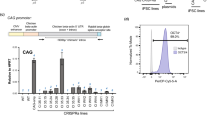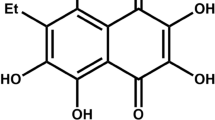Abstract
Testis-specific protein, Y-encoded like (TSPYL) family proteins (TSPYL1-6), which are members of the nucleosome assembly protein superfamily, have been determined to be involved in the regulation of various cellular functions. However, the potential role of TSPYL family proteins in endothelial cells (ECs) has not been determined. Here, we demonstrated that the expression of TSPYL5 is highly enriched in human ECs such as human umbilical vein endothelial cells (HUVECs) and human pluripotent stem cell-differentiated ECs (hPSC-ECs). Importantly, TSPYL5 overexpression was shown to promote EC proliferation and functions, such as migration and tube formation, by downregulating p53 expression. Adriamycin-induced senescence was markedly blocked by TSPYL5 overexpression. In addition, the TSPYL5 depletion-mediated loss of EC functions was blocked by p53 inhibition. Significantly, TSPYL5 overexpression promoted angiogenesis in Matrigel plug and wound repair in a mouse skin wound healing model in vivo. Our results suggest that TSPYL5, a novel angiogenic regulator, plays a key role in maintaining endothelial integrity and function. These findings extend the understanding of TSPYL5-dependent mechanisms underlying the regulation of p53-related functions in ECs.







Similar content being viewed by others
References
Arnemann J, Jakubiczka S, Thuring S, Schmidtke J (1991) Cloning and sequence analysis of a human Y-chromosome-derived, testicular cDNA, TSPY. Genomics 11(1):108–114
Schnieders F, Dork T, Arnemann J, Vogel T, Werner M, Schmidtke J (1996) Testis-specific protein, Y-encoded (TSPY) expression in testicular tissues. Hum Mol Genet 5(11):1801–1807
Lau Y, Chou P, Iezzoni J, Alonzo J, Komuves L (2000) Expression of a candidate gene for the gonadoblastoma locus in gonadoblastoma and testicular seminoma. Cytogenet Cell Genet 91(1–4):160–164. https://doi.org/10.1159/000056838
Su MT, Lee IW, Kuo PL (2006) Presence of TSPY transcript and absence of transcripts of other Y chromosomal genes in a case of microscopic gonadoblastoma. Gynecol Oncol 103(1):357–360. https://doi.org/10.1016/j.ygyno.2006.05.010
Dasari VK, Goharderakhshan RZ, Perinchery G, Li LC, Tanaka Y, Alonzo J, Dahiya R (2001) Expression analysis of Y chromosome genes in human prostate cancer. J Urol 165(4):1335–1341
Vogel T, Dittrich O, Mehraein Y, Dechend F, Schnieders F, Schmidtke J (1998) Murine and human TSPYL genes: novel members of the TSPY-SET-NAP1L1 family. Cytogenet Cell Genet 81(3–4):265–270. https://doi.org/10.1159/000015042
Dechend F, Williams G, Skawran B, Schubert S, Krawczak M, Tyler-Smith C, Schmidtke J (2000) TSPY variants in six loci on the human Y chromosome. Cytogenet Cell Genet 91(1–4):67–71. https://doi.org/10.1159/000056821
Kim TY, Zhong S, Fields CR, Kim JH, Robertson KD (2006) Epigenomic profiling reveals novel and frequent targets of aberrant DNA methylation-mediated silencing in malignant glioma. Cancer Res 66(15):7490–7501. https://doi.org/10.1158/0008-5472.CAN-05-4552
Lin CW, Huang TN, Wang GS, Kuo TY, Yen TY, Hsueh YP (2006) Neural activity- and development-dependent expression and distribution of CASK interacting nucleosome assembly protein in mouse brain. J Comp Neurol 494(4):606–619. https://doi.org/10.1002/cne.20825
Tao KP, Fong SW, Lu Z, Ching YP, Chan KW, Chan SY (2011) TSPYL2 is important for G1 checkpoint maintenance upon DNA damage. PLoS ONE 6(6):e21602. https://doi.org/10.1371/journal.pone.0021602
Wang GS, Hong CJ, Yen TY, Huang HY, Ou Y, Huang TN, Jung WG, Kuo TY, Sheng M, Wang TF, Hsueh YP (2004) Transcriptional modification by a CASK-interacting nucleosome assembly protein. Neuron 42(1):113–128
Hsueh YP (2006) The role of the MAGUK protein CASK in neural development and synaptic function. Curr Med Chem 13(16):1915–1927
Epping MT, Lunardi A, Nachmani D, Castillo-Martin M, Thin TH, Cordon-Cardo C, Pandolfi PP (2015) TSPYL2 is an essential component of the REST/NRSF transcriptional complex for TGFbeta signaling activation. Cell Death Differ 22(8):1353–1362. https://doi.org/10.1038/cdd.2014.226
Roth LM, Cheng L (2015) Expression of Transcription Factors and Nuclear Receptors in Mixed Germ Cell-Sex Cord Stromal Tumor and Related Tumors of the Gonads. Int J Gynecol Pathol 34(6):528–534. https://doi.org/10.1097/PGP.0000000000000192
Kido T, Lo RC, Li Y, Lee J, Tabatabai ZL, Ng IO, Lau YF (2014) The potential contributions of a Y-located protooncogene and its X homologue in sexual dimorphisms in hepatocellular carcinoma. Hum Pathol 45(9):1847–1858. https://doi.org/10.1016/j.humpath.2014.05.002
Puffenberger EG, Hu-Lince D, Parod JM, Craig DW, Dobrin SE, Conway AR, Donarum EA, Strauss KA, Dunckley T, Cardenas JF, Melmed KR, Wright CA, Liang W, Stafford P, Flynn CR, Morton DH, Stephan DA (2004) Mapping of sudden infant death with dysgenesis of the testes syndrome (SIDDT) by a SNP genome scan and identification of TSPYL loss of function. Proc Natl Acad Sci USA 101(32):11689–11694. https://doi.org/10.1073/pnas.0401194101
de Andrade TG, Peterson KR, Cunha AF, Moreira LS, Fattori A, Saad ST, Costa FF (2006) Identification of novel candidate genes for globin regulation in erythroid cells containing large deletions of the human beta-globin gene cluster. Blood Cells Mol Dis 37(2):82–90. https://doi.org/10.1016/j.bcmd.2006.07.003
Moey C, Hinze SJ, Brueton L, Morton J, McMullan DJ, Kamien B, Barnett CP, Brunetti-Pierri N, Nicholl J, Gecz J, Shoubridge C (2016) Xp11.2 microduplications including IQSEC2, TSPYL2 and KDM5C genes in patients with neurodevelopmental disorders. Eur J Hum Genet 24(3):373–380. https://doi.org/10.1038/ejhg.2015.123
Grasberger H, Bell GI (2005) Subcellular recruitment by TSG118 and TSPYL implicates a role for zinc finger protein 106 in a novel developmental pathway. Int J Biochem Cell Biol 37(7):1421–1437. https://doi.org/10.1016/j.biocel.2005.01.013
Liu M, Ingle JN, Fridley BL, Buzdar AU, Robson ME, Kubo M, Wang L, Batzler A, Jenkins GD, Pietrzak TL, Carlson EE, Goetz MP, Northfelt DW, Perez EA, Williard CV, Schaid DJ, Nakamura Y, Weinshilboum RM (2013) TSPYL5 SNPs: association with plasma estradiol concentrations and aromatase expression. Mol Endocrinol 27(4):657–670. https://doi.org/10.1210/me.2012-1397
Son MY, Choi H, Han YM, Cho YS (2013) Unveiling the critical role of REX1 in the regulation of human stem cell pluripotency. Stem cells 31(11):2374–2387. https://doi.org/10.1002/stem.1509
Yoo CH, Na HJ, Lee DS, Heo SC, An Y, Cha J, Choi C, Kim JH, Park JC, Cho YS (2013) Endothelial progenitor cells from human dental pulp-derived iPS cells as a therapeutic target for ischemic vascular diseases. Biomaterials 34(33):8149–8160. https://doi.org/10.1016/j.biomaterials.2013.07.001
Li M, Chen D, Shiloh A, Luo J, Nikolaev AY, Qin J, Gu W (2002) Deubiquitination of p53 by HAUSP is an important pathway for p53 stabilization. Nature 416(6881):648–653. https://doi.org/10.1038/nature737
Epping MT, Meijer LA, Krijgsman O, Bos JL, Pandolfi PP, Bernards R (2011) TSPYL5 suppresses p53 levels and function by physical interaction with USP7. Nat Cell Biol 13(1):102–108. https://doi.org/10.1038/ncb2142
Weissbein U, Plotnik O, Vershkov D, Benvenisty N (2017) Culture-induced recurrent epigenetic aberrations in human pluripotent stem cells. PLoS Genet 13(8):e1006979. https://doi.org/10.1371/journal.pgen.1006979
Clark J, Alvarez DF, Alexeyev M, King JA, Huang L, Yoder MC, Stevens T (2008) Regulatory role for nucleosome assembly protein-1 in the proliferative and vasculogenic phenotype of pulmonary endothelium. Am J Physiol Lung Cell Mol Physiol 294(3):L431–L439. https://doi.org/10.1152/ajplung.00316.2007
Kim EJ, Lee SY, Kim TR, Choi SI, Cho EW, Kim KC, Kim IG (2010) TSPYL5 is involved in cell growth and the resistance to radiation in A549 cells via the regulation of p21(WAF1/Cip1) and PTEN/AKT pathway. Biochem Biophys Res Commun 392(3):448–453. https://doi.org/10.1016/j.bbrc.2010.01.045
Shen Y, Tu W, Liu Y, Yang X, Dong Q, Yang B, Xu J, Yan Y, Pei X, Liu M, Xu W, Yang Y (2018) TSPY1 suppresses USP7-mediated p53 function and promotes spermatogonial proliferation. Cell Death Dis 9(5):542. https://doi.org/10.1038/s41419-018-0589-7
Lakshmanan I, Salfity S, Seshacharyulu P, Rachagani S, Thomas A, Das S, Majhi PD, Nimmakayala RK, Vengoji R, Lele SM, Ponnusamy MP, Batra SK, Ganti AK (2017) MUC16 regulates TSPYL5 for lung cancer cell growth and chemoresistance by suppressing p53. Clin Cancer Res 23(14):3906–3917. https://doi.org/10.1158/1078-0432.CCR-16-2530
Grillari J, Hohenwarter O, Grabherr RM, Katinger H (2000) Subtractive hybridization of mRNA from early passage and senescent endothelial cells. Exp Gerontol 35(2):187–197
Morimoto Y, Bando YK, Shigeta T, Monji A, Murohara T (2011) Atorvastatin prevents ischemic limb loss in type 2 diabetes: role of p53. J Atheroscler Thromb 18(3):200–208
Gogiraju R, Xu X, Bochenek ML, Steinbrecher JH, Lehnart SE, Wenzel P, Kessel M, Zeisberg EM, Dobbelstein M, Schafer K (2015) Endothelial p53 deletion improves angiogenesis and prevents cardiac fibrosis and heart failure induced by pressure overload in mice. J Am Heart Assoc 4 (2):e001770. https://doi.org/10.1161/JAHA.115.001770
Acknowledgements
This work was supported by National Research Foundation of Korea (NRF) (Grant No. 2017R1A2B2012190) and NST (Grant No. CRC-15-02-KRIBB) grants from the Korean government (MSIP).
Author information
Authors and Affiliations
Contributions
H-JN: Conception and design, data analysis and interpretation, manuscript writing, final approval of manuscript. CEY: Conception and design, data analysis and interpretation, manuscript writing, final approval of manuscript. H-SK: Collection and assembly of data, data analysis and interpretation, manuscript writing, final approval of manuscript. JL: Conception and design, data analysis and interpretation. J-YK: Collection and assembly of data, manuscript writing. YSC: Conception and design, data analysis and interpretation, financial support, manuscript writing, final approval of manuscript.
Corresponding author
Ethics declarations
Conflict of interest
The authors have declared no potential conflicts of interest.
Electronic supplementary material
Below is the link to the electronic supplementary material.
Rights and permissions
About this article
Cite this article
Na, HJ., Yeum, C.E., Kim, HS. et al. TSPYL5-mediated inhibition of p53 promotes human endothelial cell function. Angiogenesis 22, 281–293 (2019). https://doi.org/10.1007/s10456-018-9656-z
Received:
Accepted:
Published:
Issue Date:
DOI: https://doi.org/10.1007/s10456-018-9656-z




